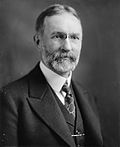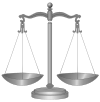List of United States Supreme Court cases, volume 268
| Supreme Court of the United States | |
|---|---|
 | |
 | |
| 38°53′26″N 77°00′16″W / 38.89056°N 77.00444°W | |
| Established | March 4, 1789 |
| Location | Washington, D.C. |
| Coordinates | 38°53′26″N 77°00′16″W / 38.89056°N 77.00444°W |
| Composition method | Presidential nomination with Senate confirmation |
| Authorised by | Constitution of the United States, Art. III, § 1 |
| Judge term length | life tenure, subject to impeachment and removal |
| Number of positions | 9 (by statute) |
| Website | supremecourt |
| This article is part of a series on the |
| Supreme Court of the United States |
|---|
 |
| The Court |
| Current membership |
|
| Lists of justices |
|
| Court functionaries |
|
This is a list of cases reported in volume 268 of United States Reports, decided by the Supreme Court of the United States in 1925.
Justices of the Supreme Court at the time of volume 268 U.S.
The Supreme Court is established by
When the cases in volume 268 were decided the Court comprised the following nine members:
| Portrait | Justice | Office | Home State | Succeeded | Date confirmed by the Senate (Vote) |
Tenure on Supreme Court |
|---|---|---|---|---|---|---|

|
William Howard Taft | Chief Justice
|
Connecticut | Edward Douglass White | June 30, 1921 (Acclamation) |
July 11, 1921 – February 3, 1930 (Retired) |

|
Oliver Wendell Holmes Jr. | Associate Justice | Massachusetts | Horace Gray | December 4, 1902 (Acclamation) |
December 8, 1902 – January 12, 1932 (Retired) |

|
Willis Van Devanter | Associate Justice | Wyoming | Edward Douglass White (as Associate Justice) | December 15, 1910 (Acclamation) |
January 3, 1911 – June 2, 1937 (Retired) |

|
James Clark McReynolds | Associate Justice | Tennessee | Horace Harmon Lurton | August 29, 1914 (44–6) |
October 12, 1914 – January 31, 1941 (Retired) |

|
Louis Brandeis | Associate Justice | Massachusetts | Joseph Rucker Lamar | June 1, 1916 (47–22) |
June 5, 1916 – February 13, 1939 (Retired) |

|
George Sutherland | Associate Justice | Utah | John Hessin Clarke | September 5, 1922 (Acclamation) |
October 2, 1922 – January 17, 1938 (Retired) |

|
Pierce Butler
|
Associate Justice | Minnesota | William R. Day | December 21, 1922 (61–8) |
January 2, 1923 – November 16, 1939 (Died) |

|
Edward Terry Sanford | Associate Justice | Tennessee | Mahlon Pitney | January 29, 1923 (Acclamation) |
February 19, 1923 – March 8, 1930 (Died) |

|
Harlan F. Stone | Associate Justice | New York | Joseph McKenna | February 5, 1925 (71–6) |
March 2, 1925 – July 2, 1941 (Continued as chief justice) |
Notable Cases in 268 U.S.
Linder v. United States
Pierce v. Society of Sisters
In Pierce v. Society of Sisters, 268 U.S. 510 (1925), the Supreme Court overturned an Oregon statute requiring children to attend only public schools. The decision significantly expanded coverage of the Due Process Clause of the Fourteenth Amendment to the United States Constitution to recognize personal civil liberties. The decision has been cited as a precedent in numerous later cases. The right of parents to control their children's education without state interference became a "cause célèbre" following the case, and religious groups still defend this right from state encroachment.
Gitlow v. New York
Gitlow v. New York, 268 U.S. 652 (1925), is a landmark decision, in which the Supreme Court held that the Fourteenth Amendment to the United States Constitution had extended the First Amendment's provisions protecting freedom of speech and freedom of the press to apply to the governments of U.S. states. Along with Chicago, Burlington & Quincy Railroad Co. v. City of Chicago (1897), it was one of the first major cases involving the incorporation of the Bill of Rights. It was also one of a series of Supreme Court cases that defined the scope of the First Amendment's protection of free speech, and established the standard to which a state or the federal government would be held when it criminalized speech or writing.
Citation style
Under the Judiciary Act of 1789 the federal court structure at the time comprised District Courts, which had general trial jurisdiction; Circuit Courts, which had mixed trial and appellate (from the US District Courts) jurisdiction; and the United States Supreme Court, which had appellate jurisdiction over the federal District and Circuit courts—and for certain issues over state courts. The Supreme Court also had limited original jurisdiction (i.e., in which cases could be filed directly with the Supreme Court without first having been heard by a lower federal or state court). There were one or more federal District Courts and/or Circuit Courts in each state, territory, or other geographical region.
The
Bluebook citation style is used for case names, citations, and jurisdictions.
- "# Cir." = United States Court of Appeals
- e.g., "3d Cir." = United States Court of Appeals for the Third Circuit
- "D." = United States District Court for the District of . . .
- e.g.,"D. Mass." = United States District Court for the District of Massachusetts
- "E." = Eastern; "M." = Middle; "N." = Northern; "S." = Southern; "W." = Western
- e.g.,"M.D. Ala." = United States District Court for the Middle District of Alabama
- "Ct. Cl." = United States Court of Claims
- The abbreviation of a state's name alone indicates the highest appellate court in that state's judiciary at the time.
- e.g.,"Pa." = Supreme Court of Pennsylvania
- e.g.,"Me." = Supreme Judicial Court of Maine
List of cases in volume 268 U.S.
Notes and references
- ^ "Supreme Court Research Guide". Georgetown Law Library. Retrieved April 7, 2021.
External links
- [1] Case reports in volume 268 from Library of Congress
- [2] Case reports in volume 268 from Court Listener
- [3] Case reports in volume 268 from the Caselaw Access Project of Harvard Law School
- [4] Case reports in volume 268 from Google Scholar
- [5] Case reports in volume 268 from Justia
- [6] Case reports in volume 268 from Open Jurist
- Website of the United States Supreme Court
- United States Courts website about the Supreme Court
- National Archives, Records of the Supreme Court of the United States
- American Bar Association, How Does the Supreme Court Work?
- The Supreme Court Historical Society

